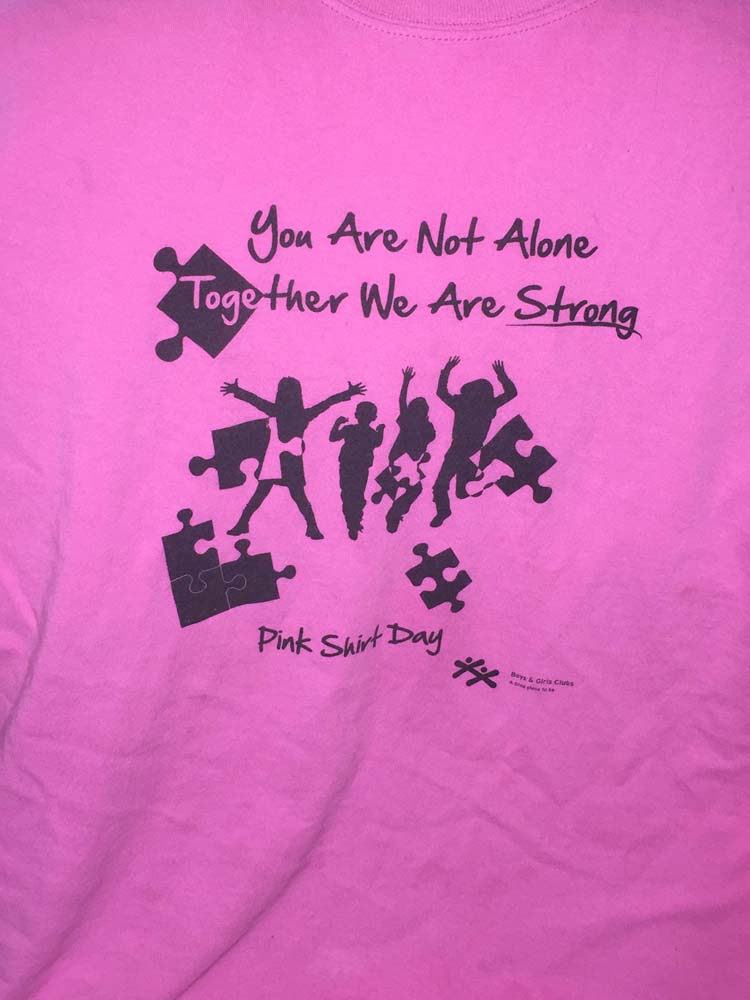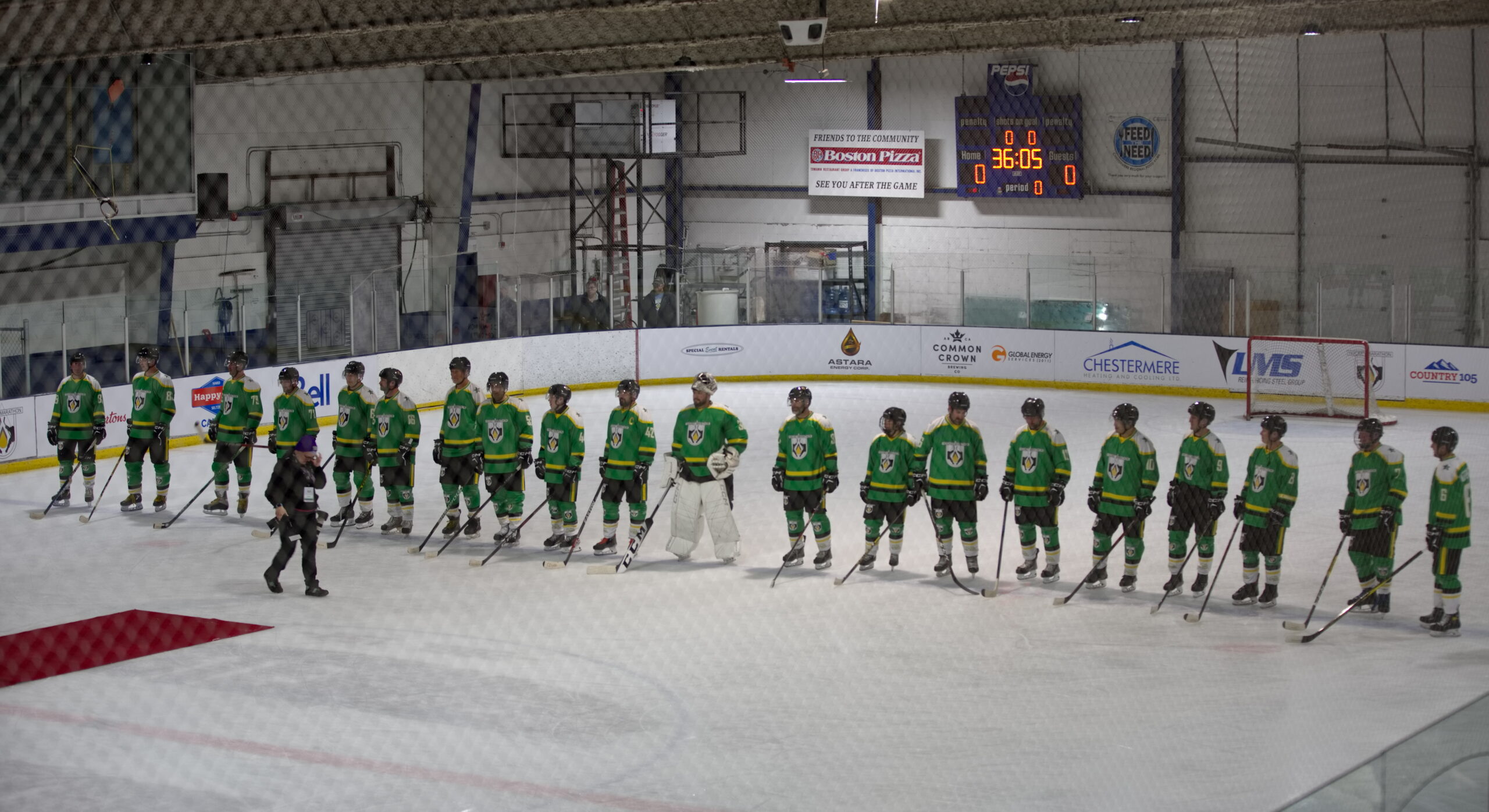
All too often there are reports of the horrific incidents of bullying going too far. What once was childhood spats on the playground, now has escalated to unimaginable forms of what could be considered nothing shy of abuse and even torture in some cases. And as the years have passed, bullying has increased in severity, it affects all ages and genders and with the blessing/curse of the internet and social media, bullies can now attack and stay anonymous.
Anti-Bullying Day (a.k.a. Pink Shirt day) is a day celebrated on various dates across the world, originating in Canada. In 2012, the United Nations declared the official day as May 4 and is recognized by over 25 countries worldwide, such as the United States, Australia, and the United Kingdom. On this day, those who participate wear pink, blue, or purple shirts (depending on location) to symbolize a stand against bullying.
The original event was organized by David Shepherd and Travis Price of Berwick, Nova Scotia, who in 2007 bought and distributed 50 pink shirts after male ninth grade student Charles McNeill was bullied for wearing a pink shirt during the first day of school. In Nova Scotia, Nova Scotia Premier Rodney MacDonald proclaimed the second Thursday of September “Stand Up Against Bullying Day” in recognition of these events.
In 2008, the then Premier of British Columbia, Gordon Campbell proclaimed February 27 to be the provincial anti-bullying day. It was then celebrated on February 25 in 2009. In 2009, Boys and Girls Clubs worked on pink T-shirts that say “Bullying Stops Here.” and “Pink Shirt Day” for Anti-Bullying Day.
On the se recognized dates, Anti-bullying Day activities are held at schools, places of business with the hope of showing solidarity against bullying. But will wearing a pink shirt stop bullying? Seeing as this campaign kicked off several years ago and bullying is still on the rise, the answer is a sad no. It would be great if a simple day of wearing pink could change a severe problem of society, but as it won’t, these events are more to show support and to join together to recognize that bullying is happening – all too often – and that it is unacceptable.
It may be impossible to stop bullying, but perhaps the focus should be turned to how society helps those that are being bullied. Learning from the horrible and unnecessary suicides, such as Amanda Todd, and looking at what could have been done to help her – to show her that someone was there for her and provide a safe place to go and talk so that ending her life was not, what she likely thought, her only choice. Amanda Todd committed suicide at the age of 15 at her home in Port Coquitlam, British Columbia, Canada. Prior to her death, Todd had posted a video on YouTube in which she used a series of flash cards to tell her experience of being blackmailed into exposing her breasts via webcam; bullied; and physically assaulted. The video went viral after her death, resulting in international media attention. The video has had more than 17 million views as of April 2014. The RCMP and British Columbia Coroners Service launched investigations into the suicide. At the time of her death, Todd was a grade 10 student at CABE Secondary in Coquitlam, a school that caters to students who have experienced social and behaviour issues in previous educational setting.
The suicide of Rehtaeh Parsons was reportedly related to sexual humiliation and bullying. Parsons, a 17-year-old former Cole Harbour District High School student, attempted suicide by hanging on April 4, 2013, at her home in Dartmouth, Nova Scotia, leading to a coma and the decision to switch her life support machine off on April 7, 2013. Her death has been attributed to online distribution of photos of an alleged gang rape that occurred 17 months prior to her suicide, in November 2011. On a Facebook page set up in tribute to her daughter, Parsons’s mother blamed the four boys who allegedly raped and released images of her, the subsequent constant “bullying and messaging and harassment”, and the failure of the Canadian justice system, for her daughter’s decision to commit suicide. In response to Parsons’s suicide, Nova Scotia enacted a law in August 2013 allowing victims to seek protection from cyberbullying and to sue the perpetrator.
Bullying happens in many different forms. It’s doing, saying or acting in a way that hurts someone else or makes him or her feel bad on purpose. Some kinds of bullying are: Verbal (name-calling), Physical (punching, pushing), Social (leaving someone out of a game or group on purpose), Extortion (stealing someone’s money or toys), Cyberbullying (using computers, the Internet, mobile phones, etc. to bully others).
We all seem to recognize physical bullying, but sometimes other forms of bullying are not as easy to identify. Being called names can hurt someone else’s feelings really badly. All forms of bullying are harmful, but VERBAL bullying, including name-calling, happens more often than any other kind of bullying. Social media, although definitely has its positive uses, is all too often used as the weapon of choice when it comes to bullying – and it isn’t just teenagers. Grown adults can often be seen on social media name calling, putting others down and although it is not physical, it is just as damaging.
BullyingCanada.ca states that “Bullying makes people upset. It can make children feel lonely, unhappy and frightened. It can make them feel unsafe and think there must be something wrong with them. Children can lose confidence and may not want to go to school anymore. It may even make them sick”. Approximately one in ten children have bullied others and as many as 25% of children in grades four to six have been bullied. A 2004 study published in the medical Journal of Pediatrics found that about one in seven Canadian children aged 11 to 16 are victims of bullying. Studies have found bullying occurs once every seven minutes on the playground and once every 25 minutes in the classroom. In the majority of cases, bullying stops within 10 seconds when peers intervene, or do not support the bullying behaviour.
It is our responsibility as a society to take a stand against this and to watch out for our children, our neighbours, our co-workers and even ourselves. Watching out for those that are being bullied and also to ensure that we are not becoming or raising bullies. So on February 25th, yes – show your support, wear a pink shirt but remember that this is a year round epidemic and as simple as it sounds – just be nice and treat others as you would want to be treated.







